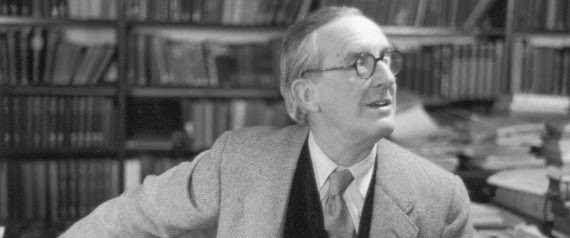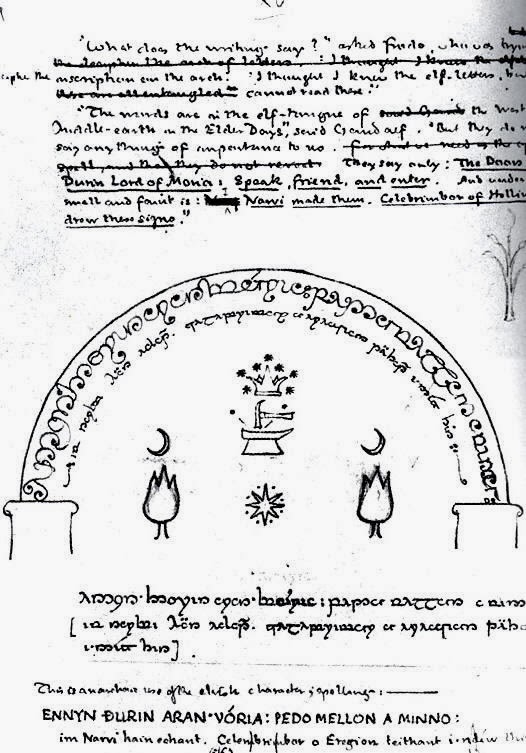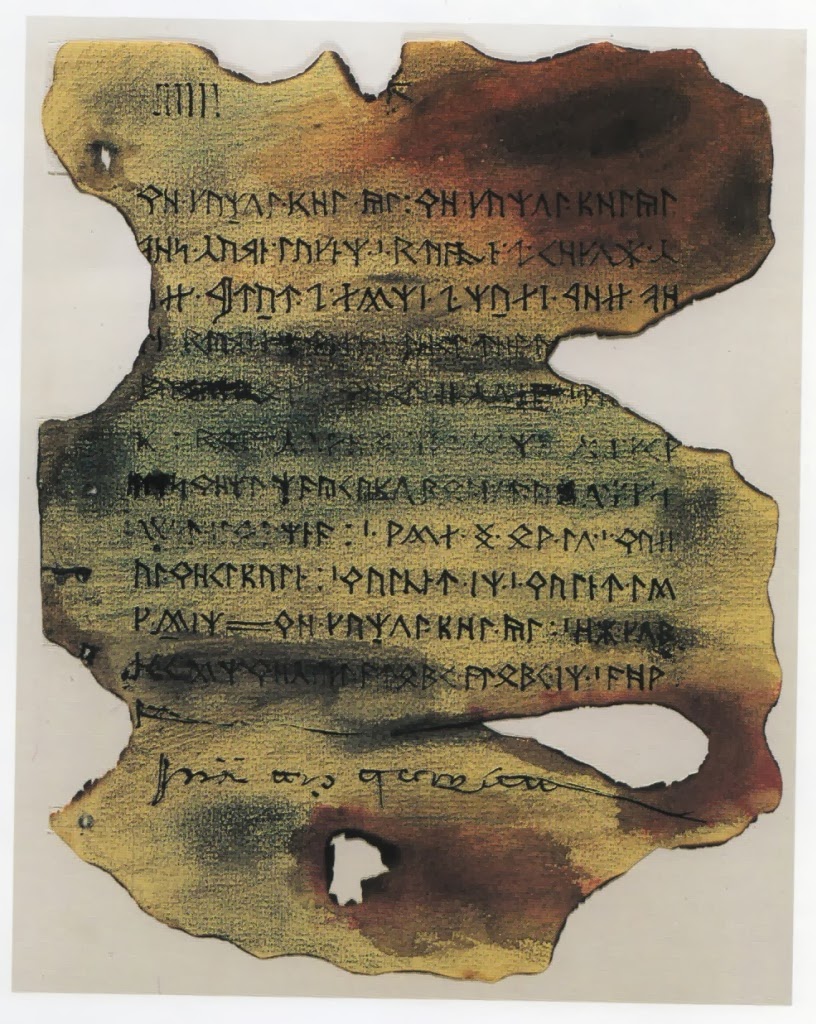
J. R. R. Tolkien in his study at Merton College in December, 1955. Photo via The Norse Mythology Blog.
Marquette University in Milwaukee, Wisconsin, is the home of the J.R.R. Tolkien Collection, a treasure trove of Tolkien manuscripts and related materials. Norse mythologist Dr. Karl E. H. Seigfried recently led a group of his students on a field trip to visit the collection. Dr. Seigfried is a faculty member at Carthage College in Kenosha, Wisconsin, specializing in Norse religion, and teaches Norse mythology classes at Loyola University and Newberry Library, both in Chicago, Illinois. He also founded the Carthage College Tolkien Society last year and writes The Norse Mythology Blog. Marion E. Wade Center archivist and Wheaton College Tolkien Society advisor Laura Schmidt organized the trip for students from Carthage College, Wheaton College, and Newberry Library.

Memorial Library of Marquette University, Milwaukee, Wisconsin, home to the J. R. R. Tolkien Collection. Photo credit: The Norse Mythology Blog.
Dr. Seigfried shared details of the group’s experiences during their October 2013 visit in a two-part blog post on The Norse Mythology Blog (Part 1; Part 2). The J. R. R. Tolkien Collection houses the original manuscripts of The Hobbit, The Lord of the Rings, Farmer Giles of Ham, and Mr. Bliss. The collection includes Tolkien’s holographs (hand-written manuscripts), typescripts, and page proofs with Tolkien’s corrections. The collection contains thousands of pages of manuscripts, along with an extensive collection of copies of Tolkien’s published works and books about Tolkien. Fan art and fanzines have a place as well in this extensive archive. Tolkien’s art, academic and personal papers, and manuscripts of The Silmarillion reside at the Bodleian Library of Oxford University.
The group was guided through their private tour of the collection by Bill Fliss, archivist, and Amy Cooper Cary, Head of Special Collections and University Archives. Dr. Seigfried and the students were treated to close-up views of some of the collection’s most impressive pieces. It is very difficult to choose which amazing documents to highlight here, but the following items stand out:
- A holograph of The Hobbit, Chapter 5, “Riddles in the Dark.”
- The original hand-written title page of The Lord of the Rings, showing the original title, The Magic Ring, crossed out and changed to the title we know and love.
- The original printer’s rendering of the dust jacket for the 1937 first edition of The Hobbit. The archives also house Tolkien’s original watercolor and ink illustration for the cover. Sadly, that piece has been damaged.
- A drawing of an early version of the Doors of Durin. Dr. Seigfried observes that this version of the West-gate of Moria is less elaborate than the final published version, but contains a detail that the final version does not — the hammer throwing bits of metal from the anvil.
- Pages from the Book of Mazarbul, the book discovered by the Fellowship as they traveled through Moria in the first book of The Lord of the Rings. Tolkien himself created these facsimiles of pages from the dwarves’ book. Dr. Seigfried suggests that perhaps Tolkien wanted to create imaginary documents from his Middle-earth that possessed the same sense of history as those he had encountered from our own history, such as facsimiles of pages from Beowulf. The group saw several drafts of the Book of Mazarbul facsimile pages. Tolkien wrote the text in English first and then translated it into runes and tengwar script for the facsimiles. Dr. Seigfried commented, “Perhaps the nicest element of the simulated pages is the scrawl of the final elf-letters spelling out ‘They are coming.’”
- Drafts of “The Scouring of the Shire,” The Lord of the Rings, Book VI, Chapter VIII. The tour group saw a progression of stages for this particular chapter that illustrated the complexity of Tolkien’s writing process. The stages for the chapter were holograph notes, rough draft, draft in fairer hand, typed version, and galley proofs. Galley proofs are usually simply checked for mistakes, but in this instance Tolkien inserted new text into the galley proof, text that had a deep impact on the scene. Dr. Seigfried’s blog relates the details of that text and its importance in the story.
- Deleted scenes and unpublished materials from The Lord of the Rings. These materials include an epilogue featuring Sam explaining his adventures in the War of the Ring to his children, 15 years after Frodo’s departure, and facsimile versions of a letter from Aragorn to Sam. Versions of some of the deleted portions, such as “The Quest of Erebor,” have found their way to publication.

A page with a drawing of an early version of the Doors of Durin, the West-gate of Moria. Photo credit: The Norse Mythology Blog.
The reader may by now be wondering, “Why can’t I see these marvels online?” Dr. Seigfried addresses that question in his blog. Despite recent trends by many organizations to make both electronic forms of documents and 3-D scans of objects freely available online, archivists still consider microfilm to be the best format for long-term storage of materials, with its stable shelf-life of 500 years. Unfortunately, microfilm archives severely limit access to collections, and the format itself is tedious to use. In addition, there are other issues that contribute to maintaining limited access to Tolkien’s materials, including copyright considerations. We can hope that this situation will change sometime in the future. Until digitized versions of these materials become available, we will each have to plan our own trips to visit the special and magical collections of Tolkien’s materials.
The Norse Mythology Blog, “TOLKIEN ARCHIVES FIELD TRIP, Part One”
The Norse Mythology Blog, “TOLKIEN ARCHIVES FIELD TRIP, Part Two”




Pingback: Middle-earth News – Tolkien Archives Fiel...
Pingback: Middle-earth News – Tolkien Archives Field Trip